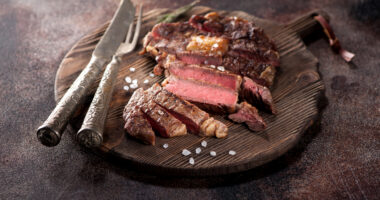
Welcome to a sizzling journey into the scorching world of chilies! From mild to wild, chilies come in various shapes, sizes, and levels of heat. In this blog, we will explore the hottest chilies on the planet, the factors that make them fiery, and the cultural impact of these fiery fruits.
Understanding the Scoville Scale
To comprehend the heat intensity of chilies, we turn to the Scoville Scale. Created by American pharmacist Wilbur Scoville in 1912, this scale measures the amount of capsaicin present in a chili pepper. Capsaicin is the compound responsible for the spicy sensation we feel when consuming chilies. The higher the Scoville rating, the hotter the chili!
The Carolina Reaper – Reigning Champion
Topping the list of the world’s hottest chilies is the Carolina Reaper. Developed by Ed Currie of the PuckerButt Pepper Company, this sinister-looking pepper clocks in at an average of 1,641,183 Scoville Heat Units (SHU). With its unique appearance, fruity flavor, and unparalleled heat, the Carolina Reaper is not for the faint of heart.
The Ghost Pepper – Bhut Jolokia
Once considered the hottest chili in the world, the Bhut Jolokia, commonly known as the Ghost Pepper, still ranks high on the Scoville Scale. Hailing from India, this pepper packs a punch of approximately 1,041,427 SHU. Used in traditional cooking, this fiery chili has found its way into various cuisines worldwide.
Trinidad Moruga Scorpion – A Fiery Beast
Native to Trinidad and Tobago, the Trinidad Moruga Scorpion boasts an average heat level of around 1,207,764 SHU. Known for its gnarly appearance and searing heat, this chili once held the Guinness World Record for being the hottest chili pepper.
Naga Viper – Hybrid Heat
The Naga Viper is a formidable chili that resulted from crossbreeding the Naga Morich, Bhut Jolokia, and Trinidad Scorpion chilies. Its heat can reach a blistering 1,382,118 SHU, making it one of the fiercest chilies in the world.
Impact on Culinary Culture
Hottest chilies have more to offer than just heat – they also play a significant role in culinary culture. In regions where spicy cuisine is the norm, these chilies are celebrated and integrated into traditional dishes, adding depth and complexity to the flavors. However, their intense heat demands caution, as they can overpower the uninitiated taste buds.
Health Benefits of Spicy Chilies
Beyond their heat, chilies offer an array of health benefits. Capsaicin has been linked to pain relief, metabolism stimulation, and improved heart health. While consuming extreme quantities of the hottest chilies may not be recommended, moderate consumption can contribute positively to overall well-being.
Venturing into the world of the hottest chilies is not for those seeking a mild experience. From the blazing Carolina Reaper to the enigmatic Naga Viper, these chilies captivate with their heat and flavors. As you journey through the Scoville Scale, remember to savor the heat responsibly, and perhaps you’ll discover new dimensions of flavor and culture in these fiery fruits. So, dare to take a bite and embrace the burn!













